REVERIES, TRUMPETS & TRICKS
Anton Henning
18.10.2025 - 25.01.2026
Opening: 18 October 2025, 4 pm–8 pm
The Philara Collection is pleased to present REVERIES, TRUMPETS & TRICKS, an extensive solo exhibition of work by Anton Henning. Works spanning four decades of Henning’s career, with a particular focus on his paintings, are on display. In parallel with this exhibition, the artist is making generous donations of his work to several German, Belgian and Dutch museums, including the Kunstpalast Düsseldorf. In 2025, his work can also be seen at various other institutions, including the Kunsthalle Bremen, the Kunstmuseum Bonn, the Museum Kurhaus Kleve, the Museum Neuruppin, the Sprengel Museum Hannover, the AkzoNobel Art Foundation in Amsterdam, the Kunstmuseum Den Haag, the Museum Kunstpalast Düsseldorf, as well as the Kunsthalle Mannheim and the Von der Heydt-Museum, Wuppertal.
Anton Henning questions art using its own methods. As if through a funnel, with its narrow end towards the viewer, he channels images into the present, filtered through his own gaze. In doing this, he draws on the history of art and design, as well as pop culture and the everyday: references to Polke, Palermo, Courbet, Picasso, and Bacon meet doodles, cows, lamps. This boldly unorthodox approach is reflected in Anton Henning’s career. He did not complete a classical training, abandoning the art academy after only half a semester, but instead learned a wide range of techniques independently. By his mid-twenties, this self-taught artist was already achieving his first successes in New York City; since then, his artistic output has been vast. Henning’s artistic work is particularly characterised by the notion of stylistic individuality coupled with links to tradition. His early ‘jazz pictures’, one of which appears in the exhibition, show some affinity with the psychedelic trends of the turbulent period around 1968.
REVERIES, TRUMPETS & TRICKS presents important works from his various still-life, interior, pin-up, and portrait series, genres which Henning infuses with new life. One of his paintings depicts the crucified Jesus, with a tunnel attached to his navel that projects into the picture space, as if the past is mining its way through to an in-between world – a portrait of loops and coils. Other works evoke wallpaper and familiar furniture designs, while tunnels, eyes, funnels, and appendages burrow into the images. A recurrent motif in Henning’s work is a loose, fluid form, reminiscent of a propeller or boomerang,-which the artist, as a kind of self-referential joke, has named Hennling.
The basis of many of the works is the problem of how art history can be connected to the present. Henning’s approach to finding a solution uses a method that he himself affectionately describes as ‘pilfering’: small, recurring acts of theft that bring history into the present, filtered through the lens of his own style. It is no coincidence that statements challenging the dominance of bourgeois definitions of ‘good taste’ and on originality also feature in Henning’s work. His delight in the exploration of originality and repetition is revealed through such titles as Porträt No. 538 (2018) and Interieur No. 594 (2020). While constantly oscillating between seriousness and humour, the artist always paints with an appreciative approach. He opens up worlds of floral still lifes and enigmatic paradises.
Anton Henning was born in Berlin in 1964 and now lives and works in Manker and Berlin. Since 2022, he has hosted the Antonyme Salon, the name of which is not only a play on the artist’s own name but also the notion of the antonym, by definition a word that is the opposite of another. Here, Henning, together with Wolfgang Ullrich and Jana Noritsch, discusses with guests the achievements and deficiencies of the art of the 20th century and its effects on the present.
Henning’s work has been presented in numerous solo exhibitions, including at the Museum Neuruppin (2025), the Kunsthalle Recklinghausen (2017), the Zeppelin Museum, Friedrichshafen (2016), the Georg Kolbe Museum and the Haus am Waldsee, both in Berlin, the Kunsthalle Mannheim and the Wilhelm-Hack Museum, Ludwigshafen, as well as the De Pont Museum, Tilburg, Netherlands (all 2009), S.M.A.K, Ghent (2007), the Haus Esters, Krefeld, the Museum für Moderne Kunst in Frankfurt am Main (both 2005) and the Kunstmuseum Luzern (2003).
His works have also been shown in group exhibitions internationally, including at the Okinawa Prefectural Museum and Art Museum (2024) and the Wexner Center for the Arts, Columbus, Ohio (2015), and in the same year at the National Museum of Modern Art, Tokyo. His works have also been shown in the Netherlands at the Stedelijk Museum, Amsterdam (2014), Museum Boijmans van Beuningen, Rotterdam (2012) and the Kunstmuseum Den Haag (2006). In Switzerland, his work has already been included in six exhibitions at the Kunstmuseum Luzern.
Henning has also been represented in various group exhibitions in Germany: at the Deichtorhallen, Hamburg (2015), the KW Institute for Contemporary Art, Berlin (2013), the Künstlerverein Malkasten, Düsseldorf (2004), and the Kunstsammlung NRW (2000), among others.
His Interieur No. 253 is permanently installed at the Arp Museum Bahnhof Rolandseck, Remagen. This work encompasses the interior design of the museum’s bistro, including its walls, tables, window glass, lamps, benches, and 15 paintings. He has also designed interior spaces for the Vivantes Hospice in Berlin Tempelhof, where his Interieur No. 511 and Interieur No. 512 serve as places of retreat for personal conversations. His Interieur No. 553 has been installed at the De Pont Museum, Tilburg since 2017.
Exhibition curators: Julika Bosch, Hannah Niemeier
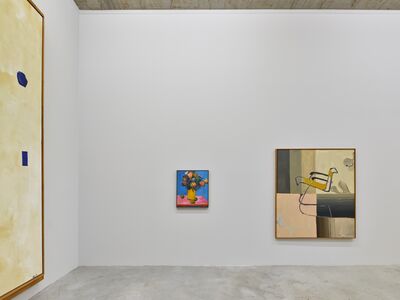
Anton Henning
Photo: Kai Werner Schmidt
VG Bild-Kunst Bonn, 2025
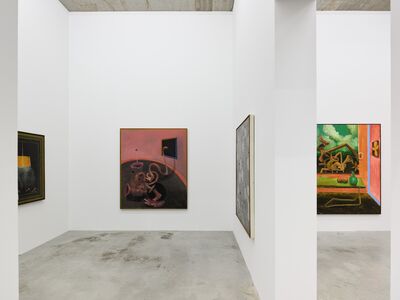
Anton Henning
Photo: Kai Werner Schmidt
VG Bild-Kunst Bonn, 2025
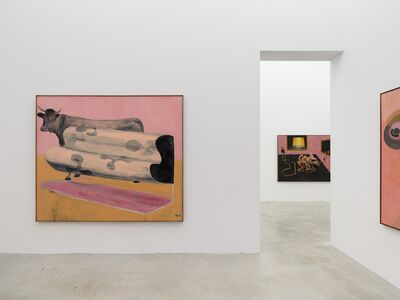
Anton Henning
Photo: Kai Werner Schmidt
VG Bild-Kunst Bonn, 2025
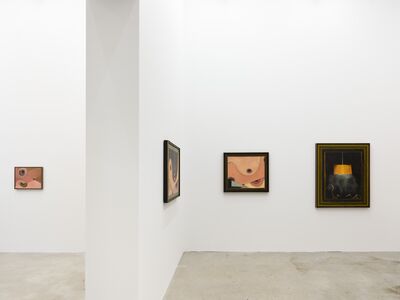
Anton Henning
Photo: Kai Werner Schmidt
VG Bild-Kunst Bonn, 2025

Anton Henning
Photo: Kai Werner Schmidt
VG Bild-Kunst Bonn, 2025
MODULAR ORGAN
Phillip Sollmann & Konrad Sprenger
18.10.2025 - 25.01.2026
Opening 18 October 2025, 4 pm–8 pm
The Philara Collection, in cooperation with the 20th annual IDO festival (lnternational Düsseldorf Organ Festival), is delighted to open MODULAR ORGAN, an exhibition by Phillip Sollmann and Konrad Sprenger. To mark this anniversary, for three months, Modular Organ System, an immersive, walk-through sound installation, will transform the former glassworks into a resonant space.
MODULAR ORGAN transcends the rigid categories of musical instrument or sculpture: it is neither a classic organ nor simply an adaptation of one, but rather a state of tonal intensification, spatial tension and physical experience.
The installation is composed of various elements, including organ pipes and wind-activated resonators such as fibreglass funnels, as well as modular sound generators, which all operate unconfined by the casing of a classic instrument. Here, notes are not merely played: instead, sound is produced in and with the space, creating an individual, physically experiential event.
What initially seems reminiscent of organ notes transmutes into a sustained experience of fluctuating intensity. Microvariations, static fields, profound resonances, superimposed frequencies, and overtone colouration create a sound milieu that cannot be experienced from a distance – it demands physical closeness and movement. The sound source is indeterminate and often invisible. The sonic characteristics of the instrument stem from various eras, techniques, and ways of thinking, thus precluding any rigid categorisation as old or new, mechanical or electronic.
Sollmann and Sprenger regard Modular Organ System as an open instrument, defined by a process of continual development. Since 2017, the work has evolved through collaborations with experts in organ building, electroacoustic music, architecture, and sound design. These Berlin-based musicians and artists have so far presented iterations of the work at various institutions and events, including STUK, Leuven (2022), Callie’s, Berlin (2021), the Kestner Gesellschaft, Hannover (2017), the Peter und Irene Ludwig Stiftung, Aachen (2018), the Meakusma Festival, Eupen (2018), and the KW Institute for Contemporary Art, Berlin (2020).
Phillip Sollmann (b. 1974 in Kassel) is an artist and composer. Using the alias Efdemin, he is one of the resident DJs at Berghain, Berlin. He has released several albums on various labels.
Joerg Hiller (b. 1977 in Lahr) performs as artist, composer and music producer under the pseudonym Konrad Sprenger. Sprenger has collaborated for many years with Arnold Dreyblatt, Ellen Fullman, Oren Ambarchi, and well-known bands such as Ethnostress, Rom and Ei, as well as the Honey-Suckle Company art collective.
Since it began in 2006, the IDO Festival has developed into a major cultural event, well-known far beyond Düsseldorf, and now attracts more than 10,000 visitors annually. Each year, from the end of September to the beginning of November, it offers a programme of more than 50 events. The aim of the festival is to introduce the organ in all its diversity across a broad spectrum of musical contexts to a curious and enthusiastic audience. Düsseldorf boasts around 200 concert-quality organs – high-value instruments that meet the most exacting artistic standards.
Concert: Jessica Ekomane, 6.12.2025, 8 pm
Closing: 24.1.2026, 5.30 pm: Artist talk at the Philara Collection, followed by an Organ Evening in St. Antonius Church, Oberkassel from 8 pm, with Ellen Arkbro, Hanne Lippard, Hampus Lindwall, among others (presented by St. Antonius, IDO-Festival, Julia Stoschek Collection and the Philara Collection).
The MODULAR ORGAN project is supported by the Aventis Foundation, the Sparkassen-Kulturstiftung Rheinland, and the Karin und Uwe Hollweg Stiftung.
Exhibition curators: Julika Bosch, Vincent Stange, Hannah Niemeier
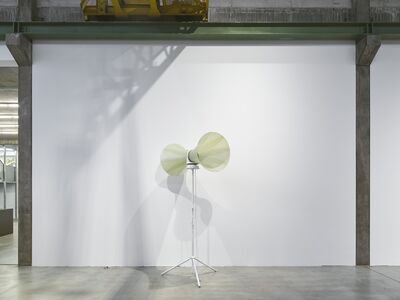
Phillip Sollmann & Konrad Sprenger
Photo: Kai Werner Schmidt
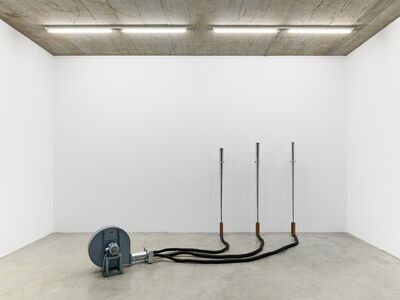
Phillip Sollmann & Konrad Sprenger
Photo: Kai Werner Schmidt
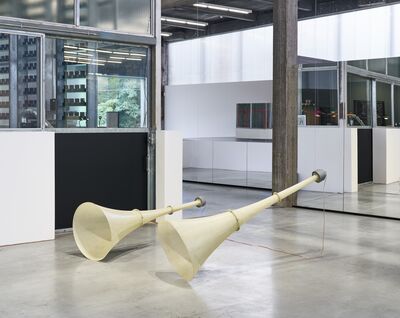
Phillip Sollmann & Konrad Sprenger
Photo: Kai Werner Schmidt
MELTING SANDS - Glass in Contemporary Art
Gabriele Beveridge, Gwenneth Boelens, Elio J Carranza, Kasia Fudakowski, Paul Hance, Annika Kahrs, Yaël Kempf, Mischa Kuball, Katharina Maderthaner, Narges Mohammadi, Leonor Serrano Rivas, Mathilde Rosier, Jeremy Shaw, Slavs and Tatars, Jeanine Verloop
18.10.2025 - 25.01.2026
Opening: 18 October 2025, 4 pm–8 pm
To mark the 150th anniversary of the former Lennarz glassworks, in whose converted premises the Philara Collection has been housed since 2016 (and where its buildings manager previously worked), Philara presents an extensive exhibition on glass in contemporary art. The presentation is a wide-ranging examination of how structure and chaos, as well as other contradictions inherent in this versatile material, can be reconciled. There is a particular focus on interdisciplinarity, collectivity and international cooperation – all characteristic of glass and its production.
MELTING SANDS examines glass as a material and substances that could replace it. What can we learn from glass? What metaphors or utopias lie concealed in its contradictory materiality? The exhibition proposes the hypothesis that glass, like no other material, allows us to visualise complexity and contradiction. Glass is defined as an amorphous and disordered solid matter, and was once considered a supercooled liquid, or even a fourth state of matter. It solidifies without crystallisation and is therefore in a state of metastability. It thus always has the intrinsic potential for spontaneous transformation.[1]
Transparency and the visual immateriality associated with it have always been and continue to be essential qualities of glass. Nineteenth- and twentieth-century utopian notions of transparency as a symbol of modernity and freedom, on the other hand, have long been outworn. Increasing digitalisation and diminishing separation of the public and private spheres mean that transparency is an increasingly negatively loaded concept – one only need consider the notion of the ‘transparent human’ as a symbol of unwanted exposure or surveillance. Yet glass – fully in keeping with the international, collective nature of its production processes – offers a wealth of other metaphors, among them emancipatory examples, built on continuity and compromise. The exhibition focuses on both emerging and established artists who engage with international collaborations, interdisciplinary research methods, and novel thematic areas.[2]
The works in this group exhibition further expand the understanding of glass as a material, using alchemical experiments, cooperative approaches, and traditional techniques to demonstrate the broad spectrum of applications of glass in contemporary art.
The exhibition is supported by the Kingdom of the Netherlands and Mondriaan Fund, Netherlands.
---
[1] We wish to thank Manuela Mehrwald for this information and Dedo von Kerssenbrock for further advice.
[2] In regard to international cooperation, the influence of the studio glass movement in the USA on educational institutions teaching (art) glass production, such as the Gerrit Rietveld Academie, Amsterdam, must be mentioned. The Netherlands in particular has special expertise in this area and is open to international, interdisciplinary cooperation, combining art with craft and taking aspects of sustainability into account.
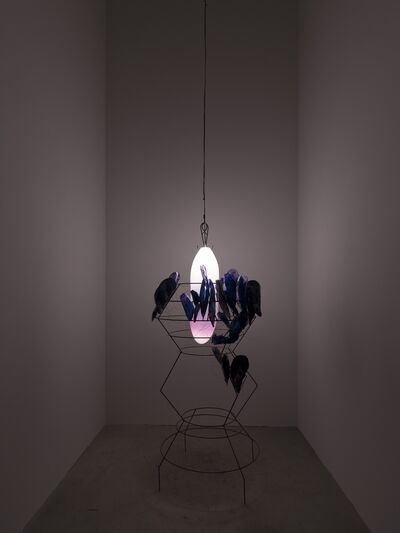
Kasia Fudakowski
Photo: Kai Werner Schmidt
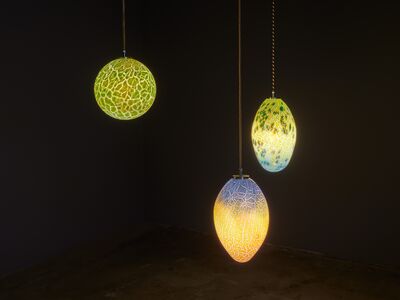
Slavs and Tatars
Photo: Kai Werner Schmidt
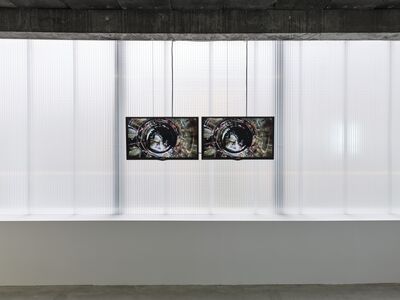
Mischa Kuball
Photo: Kai Werner Schmidt
VG Bild-Kunst Bonn, 2025
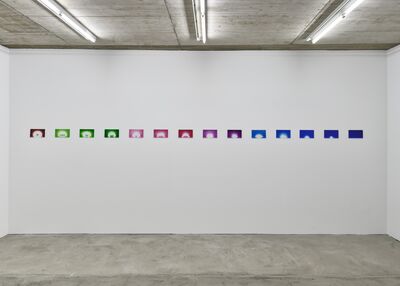
Annika Kahrs
Leihgabe der Bundesrepublik Deutschland – Sammlung zeitgenössische Kunst
Photo: Kai Werner Schmidt
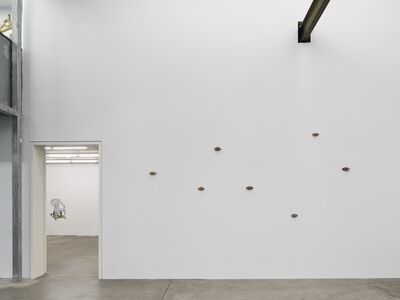
Mathilde Rosier
Production Cirva Marseille
Photo: Kai Werner Schmidt
VG Bild-Kunst Bonn, 2025

Jeanine Verloop
CHIME is commissioned by iii as part of its
annual residency program and presented in
collaboration with Rewire. The research phase
for CHIME was made possible by Mondriaan
Fund and V2_Lab for Unstable Media
Photo: Kai Werner Schmidt